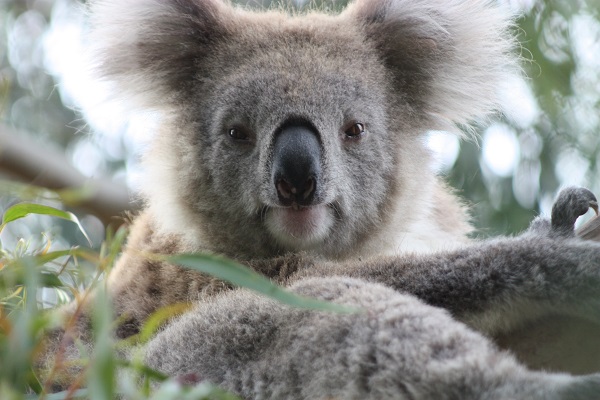Everyone has heard of kangaroo courts, but new research suggests that — at least in some parts of the country — koalas and other native animals may be best placed to adjudicate whether or not mine site rehabilitation is a success.
And even farmers, local government and urban developers may one day find themselves facing an animal tribunal, suggests Dr Jonathan Rhodes of the National Environmental Research Program's (NERP) Environmental Decisions Hub and The University of Queensland (UQ).
Dr Rhodes was commenting on research into restored areas in former sandmining sites on Queensland's Stradbroke Island which found that koalas may provide a better indication than vegetation when it comes to judging whether a revegetation program has really worked.
"Rehabilitation of a former mine site is a legal requirement in Australia," said Dr Romane Cristescu of the University of NSW, lead author of the research report.
"The goal is to restore the ecosystem to something as close to its original function as possible, and with the same plant and animal species mix it held before. However the point at which the restoration can be deemed 'successful' is difficult to judge and can be a bit subjective.
"So we decided to focus on an Australian animal that the mining company, the government and the local community all agreed should benefit from the rehabilitation on North Stradbroke Island — the koala.
"Koalas are in serious decline due to habitat loss in south-east Queensland, so it's important to know whether or not restored areas will support them."
The researchers identified the areas that were best-restored, according to the vegetation criteria used by the rehab managers. Then they equipped koalas in the surrounding area with radio collars.
By monitoring their movements and intensively surveying indirect signs (koala droppings) they were able to tell whether the koalas used and settled in the restored habitat — or moved away in search of greener pastures.
"When we compared the areas that were best-rehabilitated according to vegetation criteria with the areas being used by koalas, it quickly became apparent that they seldom matched," Dr Cristescu said.
"In fact what we thought were the best-rehabilitated areas, based on vegetation mix, did not attract them. Instead koalas were happily recolonising other parts of the rehabilitated areas that ranked lower in terms of vegetation success.
"This is a strong signal that the current policies being used to guide mine-site rehabilitation do not necessarily ensure successful rehabilitation for all plants and animals."
"But this has implications that are much broader than just the mining industry" Dr Rhodes said.
"As with mining, urban and industrial developers are increasingly being required to offset their environmental impacts — often through rehab programs.
"Our work puts a serious question mark on whether vegetation characteristics alone are sufficient to judge the value of these rehab programs."
However, the choice of which animal to use to assess the success or value of a rehab program is a tricky one, and also whether one or more species should be used. For this reason the researchers recommend that the animal(s) of choice should be ones that communities value.
"Our research is timely in this regard because it offers a way that miners, developers, regulators and the community can all judge the success of a rehab program — in our case, by relying on the judgement of the koalas," Dr Romane said.



